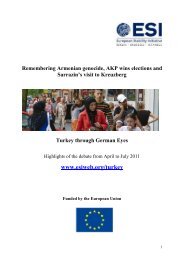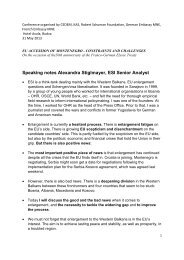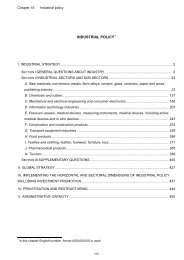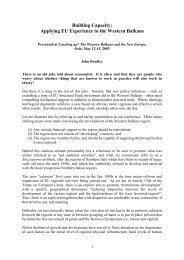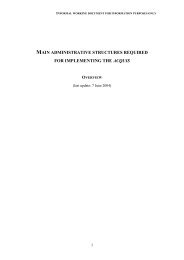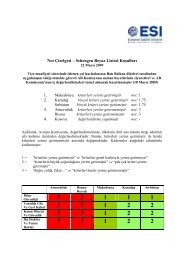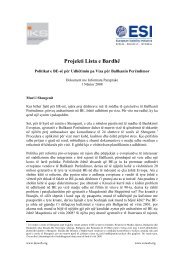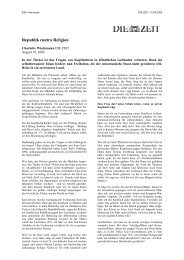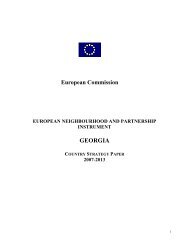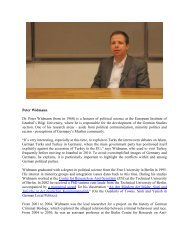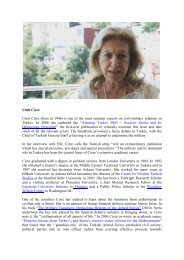Gender Assessment for USAID/Caucasus/Azerbaijan
Gender Assessment for USAID/Caucasus/Azerbaijan
Gender Assessment for USAID/Caucasus/Azerbaijan
Create successful ePaper yourself
Turn your PDF publications into a flip-book with our unique Google optimized e-Paper software.
(Convention on Elimination of all <strong>for</strong>ms of Discrimination Against Women), <strong>USAID</strong>funded<br />
assessments, and various American and <strong>Azerbaijan</strong> research sources. A<br />
bibliography of resources consulted is included as Annex A. Of equal importance, the<br />
analysis below also reflects the opinions expressed in interviews with key in<strong>for</strong>mants,<br />
including <strong>USAID</strong> staff and implementing partners, selected <strong>Azerbaijan</strong> NGO leaders,<br />
government officials and individuals. See Annex B <strong>for</strong> a list of those interviewed.<br />
Current Strategy<br />
The findings in the current strategy’s gender section 10 are still true. In particular the three<br />
statements about women continue to present a development challenge: (i) “… traditional<br />
social norms continue to restrict women’s roles in the economy.”; (ii) “As a result of<br />
social and physical displacement, as well as loss of jobs by men, women are increasingly<br />
become [sic] family breadwinners.”; and (iii) “Females represent a large proportion of<br />
small traders and vendors, so the challenge will be <strong>for</strong> them to move into small<br />
enterprises.” As discussed in the economic sector sections below, the opportunities <strong>for</strong><br />
female entrepreneurs have largely not been recognized.<br />
CONCEPTUAL ISSUES<br />
Patriarchal Traditions Reemerging<br />
In many spheres in which inequalities between men and women are identified,<br />
<strong>Azerbaijan</strong>’s “traditional” or “Eastern“ culture is used as an explanation and even a<br />
justification <strong>for</strong> continued inequality. For example, both men and women often express<br />
approval <strong>for</strong> the notion that<br />
women should not work<br />
outside the home or that<br />
preferences should be given to<br />
men in employment because<br />
the man should be the<br />
breadwinner in the family.<br />
This gender stereotype is<br />
pervasive despite the fact that<br />
a significant number of<br />
households in <strong>Azerbaijan</strong> are<br />
women-headed. In 1998, the<br />
CEDAW Committee<br />
expressed concern about<br />
“insufficient governmental<br />
10 <strong>USAID</strong>/<strong>Caucasus</strong>/<strong>Azerbaijan</strong> Strategy (2001-2003) p.10.<br />
DevTech Systems, Inc. 5 <strong>USAID</strong>/<strong>Caucasus</strong>/<strong>Azerbaijan</strong><br />
<strong>Gender</strong> <strong>Assessment</strong>




